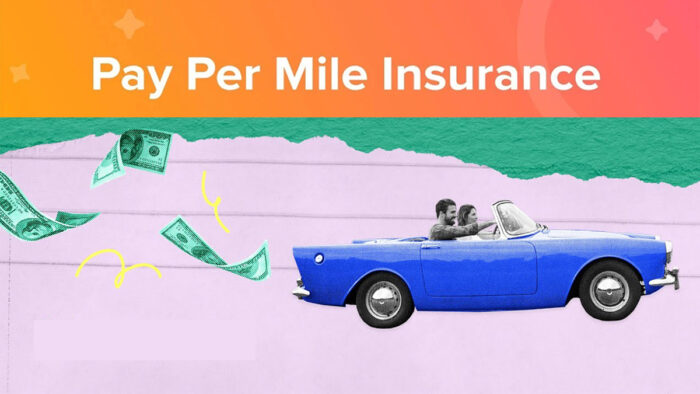In the modern era of tailor-made solutions and digital convenience, the traditional car insurance model faces a significant evolution. Enter pay-per-mile car insurance, a revolutionary approach designed to offer a more equitable and flexible insurance option for drivers.

This innovative model is especially appealing in a world where work-from-home arrangements and environmental consciousness are reducing the average person’s time behind the wheel. Here, we will explore what pay-per-mile car insurance is, how it works, its coverage and cost, and how you can secure a policy for yourself.
What is Pay-Per-Mile Car Insurance?
Pay-per-mile car insurance is an insurance product where the premium is primarily based on the number of miles a driver covers in a given period.
Unlike traditional insurance policies, which charge a fixed annual or semi-annual premium, pay-per-mile policies aim to reflect the risk more accurately by considering how much or how little the insured vehicle is used. For infrequent drivers, this can result in significant savings, making car insurance more accessible.
How Does It Work?
Pay-per-mile car insurance utilizes telematics technology to track the number of miles you drive. Upon signing up for a pay-per-mile policy, the insurance company will typically provide a small device that you plug into your vehicle’s onboard diagnostics port, which is standard in cars manufactured from 1996 onwards.
This device records your mileage and transmits the data back to the insurer. Alternatively, some insurers might use a mobile app to track mileage.
Your bill is then calculated based on a base rate plus a per-mile rate. For example, if your base rate is $30 per month, your per-mile rate is 5 cents, and you drive 500 miles in a month, your total bill for that month would be $55 ($30 base rate + $25 for miles driven).
What Does Pay-Per-Mile Car Insurance Cover?
Pay-per-mile insurance policies offer similar coverage options as traditional auto insurance policies. This can include:
- Liability coverage.
- Collision coverage.
- Comprehensive coverage.
- Uninsured or underinsured motorist coverage.
Pay-per-mile car insurance provides a dynamic and flexible approach to auto insurance, aligning costs more closely with actual vehicle use.
What Does It Not Cover?
Like traditional insurance, pay-per-mile policies have exclusions. These can vary by insurer, but typically include:
- Intentional damage caused by the policyholder.
- Use of the vehicle for commercial purposes, unless specifically covered under a commercial policy option.
- Damage from normal wear and tear.
Since you are aware that the exclusions of insurance companies vary, you should know that these are basic scenarios that pay-per-mile insurance does not cover.
How Much Does Pay-Per-Mile Car Insurance Cost?
The cost of pay-per-mile car insurance is highly individualized, depending on the base rate and per-mile rate determined by the insurer. These rates are influenced by traditional insurance factors such as:
- Your driving record.
- The type of car you drive.
- Your age and gender.
- Location.
- The specific amount you drive.
With all of these factors, insurance companies will get your estimated premium payment for this insurance policy.
How to Get Pay-Per-Mile Car Insurance
Securing pay-per-mile car insurance can be a straightforward process, particularly appealing for drivers looking to save money based on their low mileage habits. Here’s a step-by-step guide to help you get started:
- Assess your driving habits
- Research providers
- Compare quotes
- Understand the coverage
- Inquire about the tracking method
- Review the policy terms
- Apply for the policy
• Assess your driving habits
Before diving into pay-per-mile insurance, evaluate your driving habits. If you’re someone who drives infrequently, works from home, or primarily uses public transportation, pay-per-mile insurance could be a cost-effective option for you. Understand that the savings with pay-per-mile insurance are most significant for drivers who log fewer miles.
• Research providers
Not all insurance providers offer pay-per-mile insurance to interested individuals, so the first step should be to find those who do so. Begin with a simple online search for pay-per-mile insurance providers in your area. Look for customer reviews, coverage options, and any unique features or restrictions each company might have.
• Compare quotes
Once you have a list of potential providers, get quotes from each to compare prices. Most companies will offer an online quote tool. You’ll typically need to provide some basic information about yourself, your vehicle, and your driving habits. Pay close attention to the base rate and the per-mile rate to see which provider offers the best deal for your specific situation.
• Understand the coverage
As you compare quotes, also compare the coverage options each provider offers. Ensure you understand what is included in the policy, such as liability coverage, collision and comprehensive coverage, and any optional add-ons like roadside assistance. It is crucial that you select a policy that not only fits your budget but also provides the protection you need.
• Inquire about the tracking method
Pay-per-mile insurance rates are based on the actual miles you drive, which requires the insurer to track your mileage. This is typically done through a plug-in device or a mobile app. Ask each provider about their tracking method, how it works, and any data privacy policies they have in place.
• Review the policy terms
Carefully review the policy terms, including the payment schedule, how to report miles, and how to file a claim, before doing anything. Understanding these details upfront can save you from surprises down the line.
• Apply for the policy
If you have found an insurance company that can give you what you need, you can proceed to apply. Besides, this process is possible online or over the phone. You may need to provide more detailed information about yourself and your vehicle at this stage.



